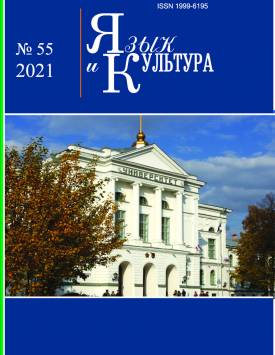Parameological representation of a stereotypical woman's role in the family (on the basis of English and Russian proverbs on marriage)
Gender linguistics is a relatively new field of research; however, gender studies have already proved to be an effective and valid tool in the linguistic research. The interest which is connected with gender studies is evoked by a social tendency to reconsider traditional female and male gender characteristics and family roles, which are naturally associated with a man or a woman. Linguistic gender approach may reveal gender hierarchical society structure, which is closely connected with femininity and masculinity symbolism. The category of gender is culturally related which is seen while comparing language pictures of the world of different linguo-cultural communities. Gender approach in phraseology is possible due to the presence of gender markers in the structure of idioms, proverbs and other phraseological units. Singling out micro-semes of gender attribute makes the biggest interest for the researcher. At the same time, the semes may be explicit or implicit. In this paper the authors analyze sociocultural female assessments represented in the proverb structure by a full (explicit and implicit) gender markers of kinship terms: жена, невеста, вдова, хозяйка, мать, дочь, a wife, a bride, a housewife, a widow, a mother, a daughter on the basis of English and Russian proverbs on matrimony and marriage. The authors used structural and semantic principles for the selection of paremiological material for this piece of work. These principles make possible the implementation of a component analysis for more than 200 (123 Russian proverbs and 81 English proverbs) English and Russian proverbs. We aim to reveal socially relevant female gender characteristics and her role in the family, which were actual for the previous generations and may remain to be important for Russian and English linguocultural communities. The analysis has been provided by means of thematic role of qualitative and as a result comparative study of Russian and English evaluative and reference typology was offered which shoed both universal and national-specific characteristics of two linguistic cultures. In the end of our research we come to a conclusion that Russian and English proverbs seem to communicate androcentric system of values as well as masculine picture of the world. The texts of the proverbs were also composed with a purpose to uncover masculine perception of the world and male dominance both in Russian and English linguocultural communities.
Keywords
proverb, gender linguistics, gender role, femininity, masculinity, gender asymmetry in language, comparative typology of proverbsAuthors
| Name | Organization | |
| Kirjukhina N.V. | Oryol State University named after I.S. Turgenev | mila0870@yandex.ru |
| Abakumova O.B. | Oryol State University named after I.S. Turgenev | abakumova-ob@mail.ru |
References

Parameological representation of a stereotypical woman's role in the family (on the basis of English and Russian proverbs on marriage) | Yazyk i Kultura – Language and Culture. 2021. № 55. DOI: 10.17223/19996195/55/6
